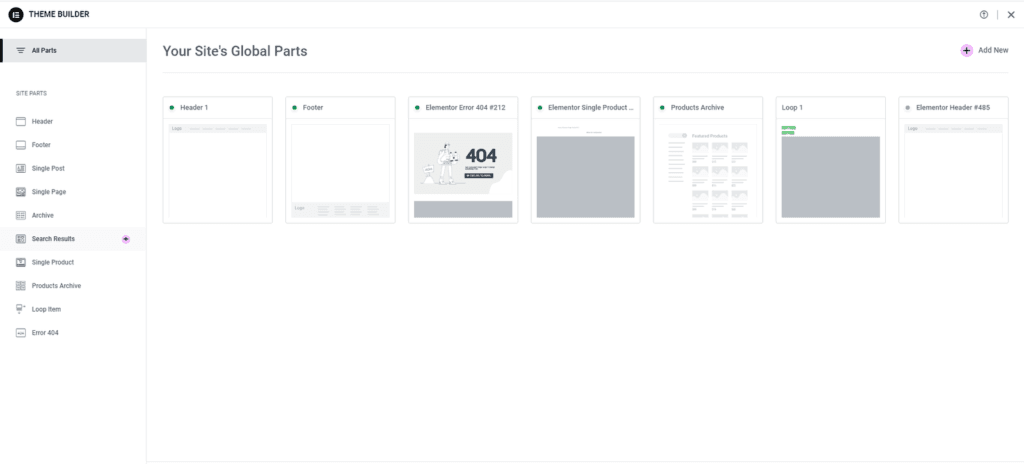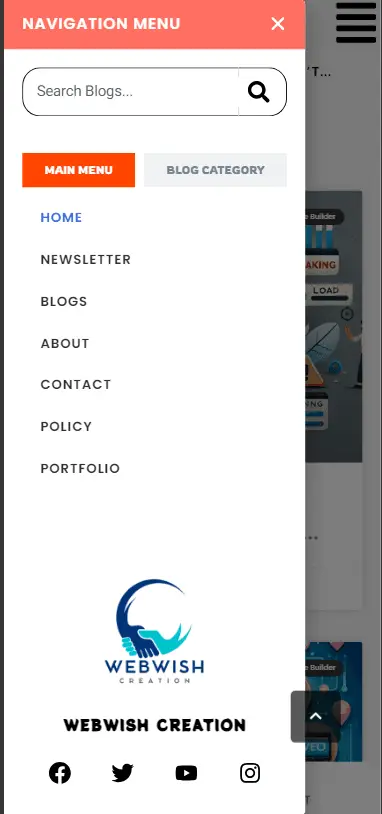Introduction
Did you know? After the arrival of Elementor, the way websites were built completely changed. That’s what we’re about to talk about. WordPress is almost synonymous with Elementor for many people. Did you know 14.1% of all WordPress users use Elementor as their page builder?
Today, we’ll discuss the advantages of using Elementor and why it’s better than other page builders. Moreover, based on my personal experience, I’ll explain why I think Elementor stands out compared to its competitors.
Back in the day, when I first started using WordPress, I explored many different page builders. At that time, I often felt lost, wishing for a guide like this to help me choose the right one. Similarly, if you’re unsure which page builder to pick, this guide will be your helping hand. Additionally, as you continue reading, you’ll understand why I and many others rely on Elementor.
These are my personal reasons. While I know Elementor isn’t the best in every single aspect, it’s still a standout choice for me and countless others.
Understanding Page Builders
WordPress page builders are basically plugins that help you edit your pages easily. WordPress feels incomplete without a page builder. A page builder is the key reason why WordPress is still the king of CMS.
Most Popular Page Builders for WordPress
| Page Builder | Strengths | Weaknesses | Why Elementor is Better |
|---|---|---|---|
| Elementor | Easy to use, massive template library, drag-and-drop editing, third-party integration. Advanced features like motion effects and responsive design tools. | Can bloat websites with unnecessary code, causing slower load times. May require optimization plugins to improve performance on large-scale websites. | N/A (Reference Builder) |
| Divi Builder | Advanced visual editor, global styles, built-in A/B testing. Built-in marketing tools like split testing for better decision-making. | Steep learning curve, especially for beginners. Requires more system resources, making it slower on some hosting environments. | Elementor is more user-friendly and has a shallower learning curve. Faster performance with less impact on hosting resources. |
| WPBakery | Backend editor, shortcode library. Compatible with most WordPress themes and plugins. | Outdated interface, reliance on shortcodes complicates builder switching. Difficult to maintain content after switching builders due to shortcode clutter. | Elementor’s modern interface and code-free functionality make it far superior. Clean and shortcode-free output makes transitions and maintenance easier. |
| Bricks Builder | Lightweight, fast, clean code, advanced customization. Offers developer tools like custom CSS and JavaScript integration. | Limited community and fewer templates for beginners. Lacks beginner-friendly tutorials and ready-to-use features. | Elementor’s large community and resources provide better support. Comprehensive documentation and beginner-friendly UI. |
| Beaver Builder | Reliable, smooth theme integration. Modular design ensures no unnecessary bloat for small projects. | Lacks advanced design options for complex layouts. Premium pricing tiers make it less appealing for small businesses. | Elementor offers advanced design features like animations. Free version provides robust functionality for budget-conscious users. |
| Gutenberg | Free, simple, reusable blocks, easy extensions. Fully integrated into WordPress core for lightweight updates. | Limited flexibility; requires plugins for advanced features. Relies heavily on additional plugins for sliders and advanced forms. | Elementor provides far more flexibility and control. Built-in elements like sliders and forms reduce the need for extra plugins. |
| Thrive Architect | Conversion-focused tools for landing pages and opt-ins. Pre-designed templates tailored for lead generation. | Specialized for conversions, not ideal for general-purpose website building. Limited design flexibility compared to other builders. | Elementor balances design flexibility with usability for all types of websites. Combines aesthetics and functionality for versatile use. |
| SeedProd | Lightweight, optimized for landing pages with countdowns and opt-ins. Pre-built blocks for fast landing page creation. | Lacks full website design features. Limited focus on general-purpose website building or eCommerce tools. | Elementor is a full-fledged page builder suitable for landing pages and complete website design. Includes WooCommerce integration for eCommerce websites. |
| Oxygen Builder | Complete coding and design control, fast and efficient websites. Ideal for developers wanting minimal bloat. | Less intuitive interface, suited for users with coding knowledge. Steeper learning curve and longer development time for beginners. | Elementor’s no-coding-required interface is more accessible to all users. Enables faster development while still offering flexibility for professionals. |
| SiteOrigin Builder | Free, works well with most themes. Excellent for budget-conscious users or basic needs. | Basic design capabilities can feel restrictive for modern designs. Limited visual editor options compared to modern builders. | Elementor offers modern design tools and templates. Its visual editing tools provide an intuitive design experience. |
The Benefit of Using Elementor
1. Popularity, Frequent Updates, and Tutorials
Elementor is very popular among millions of people for its benefits, which are about to be discussed, like the theme builder, seamless integration with themes and plugins, and more. Just for its popularity, there are a lot of tutorials available on YouTube. Moreover, there are both paid and free courses. Here are my top YouTube creators who provide good-quality tutorials:

- Rino de Boer: For medium-length tutorials, like how to make a sticky header.
- Ferdy: For long, free courses.
- Elementor themselves: Short but clever and engaging tutorials.
Elementor has a massive community. Moreover, thousands of blogging websites like ours will also help you with your Elementor journey. Other page builders don’t have such a large community.
2. Drag-and-Drop Live Editor
The Elementor drag-and-drop editor is just perfect. Of course, other page builders also come with drag-and-drop editors, but I feel Elementor’s drag-and-drop editor is better than other page builders. While Divi and WPBakery
offer drag-and-drop editing, Elementor’s editor stands out for its real-time live preview and intuitive layout. Divi’s editor can feel clunky, and WPBakery’s backend editing lacks the visual immediacy Elementor provides.
3. Extensive Template Library
Elementor is so popular because it provides thousands of pre-built templates. Templates are pre-built, functional websites. After installing a template, all you need to do is tweak and edit it. With the Pro version, they offer one-click installation of previous templates. For free users, there are plugins like Starter Templates, which are compatible with Elementor. Of course, other page builders also have templates, but they don’t have as many templates as Elementor.
4. Responsive Design Capabilities
Elementor is responsive, meaning you can design your page for mobile, tablet, and computer separately, which is great for creating a responsive website. Moreover, it helps maximize the speed of your website on every device. Additionally, almost 50% of all users on the internet come from mobile, so if your website is not responsive, you are losing almost 50% of traffic.
5. Theme Builder Functionality
The theme builder helps you make and customize headers and footers. Moreover, you can create dynamic pages like a single post page, a single product page, an archive page, etc., with it. The Elementor Theme Builder is unfortunately not available in its free version. Of course, you can enable it using an addon. Without Elementor, the builder seems incomplete. I really like its user-friendly theme builder functionality. You don’t have to do any coding; just create the header and publish it. The header is done. It’s that easy.

6. Flexibility with Third-Party Tools and Plugins
This benefit is my favorite. Elementor seamlessly integrates with themes and add-ons. Some unlimited third-party plugins/addons can enhance the power of Elementor. Whether you are a free user or a Pro user, thousands of third-party addons exist. With some addons, you can enable almost all the functionalities that Elementor Pro offers. Addons like Essential Addons, Happy Addons, and Templateify open up thousands of possibilities for Elementor. If you use other page builders like WPBakery or Divi, they might suffer from integration issues and don’t have as many add-ons.
7. Premium Widgets
Elementor has over 100 widgets. You can add more widgets using addons like Unlimited Elements for Elementor. The free version has 60 widgets by default, and the Pro version includes over 100 widgets. Other page builders may not provide this much flexibility.
8. Popup Builder
Popups are a functionality that can appear on your website whenever you want to show them to users. For example, it can be a login popup. You can also set when this popup will appear, like one minute after a user arrives on your website. With Elementor, you can create and manage popups and decide when and how to display them. Not only that, but you can also make it so that the popup opens when users click on an icon or text. Elementor provides all the features needed to create a popup. Some other page builders also provide popup functionality, but they don’t offer the extensive features that Elementor Pro does, like triggers, etc. However, you cannot use the popup functionality with Elementor free, but you can enable it with an addon.

9. Submission Widget
The “Submission” widget in Elementor is a versatile tool that can be used as a contact form. It comes with built-in CAPTCHA integration to enhance security, and you can also enable a payment option if needed. Additionally, you can configure specific actions to take place after a form submission. For example, you can set it to automatically send a thank-you email to the user who submitted the form. Alternatively, you can configure it to notify you via email, alerting you that someone has reached out.
10. Custom Code, Custom Fonts, Custom Icons – Elementor Pro
Custom Code
Elementor Pro lets you add HTML, CSS, or JavaScript to your site easily. It’s a practical alternative to using the theme file editor, making small tweaks quicker. Unlike some page builders, such as WPBakery or Beaver Builder, it doesn’t rely on extra plugins for this feature.
Custom Fonts
With Elementor Pro, you can bring in Google Fonts or upload custom fonts for your site. For instance, if you want a specific font not supported by your theme, this feature is perfect. WPBakery and Beaver Builder lack this direct capability.

Custom Icon
This feature allows you to use custom icons across your website for unique branding. You can add your own designs without needing third-party tools. Other builders like WPBakery or Beaver Builder don’t include native support for custom icons.
11. Transform
The Transform feature in Elementor’s Advanced tab lets you adjust elements creatively using CSS transformations. You can move elements with Translate, rotate them with Rotate, resize them using Scale, or slant them with Skew. The origin option lets you set where the transformation starts, and Perspective adds depth for 3D effects. You can also make responsive changes for different devices and create hover effects with Hover Transform and smooth animations using Transition Duration. It’s great for adding modern and engaging touches like zoom effects, rotations, or interactive hover animations to buttons, images, and layouts on your website. Most other page builders, like WPBakery, SeedProd, and Thrive Architect, don’t have this cool feature.
I really like the Transform feature in Elementor. It is one of my favorite features.
12. All-in-One Tool
In Elementor Pro, the Submission widget replaces plugins like WPForms. The Custom Code, Custom Icon, and Custom Font features replace the need for three additional plugins. The Popup Builder also eliminates the need for another plugin. In many ways, Elementor Pro acts as an all-in-one tool.
Competition Table
| Page Builder | User-Friendliness | Pricing | Templates Available | Drag-and-Drop Editor | Third-Party Addons | Responsive Design | Theme Builder | Custom Code Support | Pop-up Builder | Community Support | WordPress.org Rating |
|---|---|---|---|---|---|---|---|---|---|---|---|
| Elementor | ⭐⭐⭐⭐⭐ | Free / Pro ($59+/year) | Thousands | Yes | Yes | Yes | Yes | Yes | Yes | ⭐⭐⭐⭐⭐ | 4.6/5 |
| Divi Builder | ⭐⭐⭐⭐ | $89/year or $249 one-time | Hundreds | Yes | Limited | Yes | Yes | Yes | No | ⭐⭐⭐⭐ | N/A |
| WPBakery | ⭐⭐⭐ | $64 one-time | Limited | Yes | Limited | Yes | No | No | No | ⭐⭐⭐ | N/A |
| Bricks Builder | ⭐⭐⭐⭐ | $99 one-time | Growing Library | Yes | Yes | Yes | Yes | Yes | No | ⭐⭐⭐⭐ | N/A |
| Beaver Builder | ⭐⭐⭐⭐ | Free / Pro ($99+/year) | Hundreds | Yes | Yes | Yes | Yes | Yes | No | ⭐⭐⭐⭐ | 4.7/5 |
| Gutenberg | ⭐⭐⭐ | Free | Limited | No | Limited | Yes | No | Yes | No | ⭐⭐⭐ | 2.1/5 |
| Thrive Architect | ⭐⭐⭐⭐ | $97/year or $299 one-time | Limited | Yes | No | Yes | Yes | No | Yes | ⭐⭐⭐⭐ | N/A |
| SeedProd | ⭐⭐⭐⭐ | Free / Pro ($39.50+/year) | Hundreds | Yes | Limited | Yes | Limited | No | No | ⭐⭐⭐⭐ | 4.9/5 |
| Oxygen Builder | ⭐⭐⭐⭐ | $129 one-time | Growing Library | Yes | Yes | Yes | Yes | Yes | No | ⭐⭐⭐ | N/A |
| SiteOrigin Builder | ⭐⭐⭐ | Free / Pro ($29+/year) | Limited | Yes | Limited | Yes | No | No | No | ⭐⭐⭐ | 4.8/5 |
Why You Should Stick to Elementor
Suppose you’re on a ship (Elementor). The ship is quite big and beautiful, but you’re paying a lot of money to stay on that ship. You’re also earning money by making videos on that ship. Life is pretty good—you have the freedom to move around, and if you have a problem, there’s always someone to solve it. You notice that there are many things that need improvement, but it’s not easy to make changes on such a large ship. Still, you’re happy with what the ship offers.

One day, you see a small ship (Others page builders) next to your big ship. The small ship looks beautiful, and it’s cheap to live there. You notice many people jumping from your big ship to the small ship. People on the small ship are inviting you to join them because it’s quite beautiful. They suggest you should make a video about their ship.
Of course, in this analogy, the big ship is Elementor, and the small ship represents other page builders.
Now, will you leave your big ship and move to the small ship? Most of the time, the answer will be no because:
- You simply don’t know enough about the small ship.
- There aren’t many tutorials or a big community available for the small ship.
Conclusion
Over the years, I’ve tried many WordPress page builders, but none have matched the versatility and ease of use Elementor offers. With its powerful features like the popup builder, theme builder, and extensive template library, Elementor enables you to create professional, responsive websites effortlessly—no coding required.
I admit that Elementor is not perfect; it has many potential drawbacks. While no tool is perfect, Elementor stands out for its seamless integration with third-party plugins, responsive design options, and user-friendly drag-and-drop editor. Whether you’re a beginner or an experienced web designer, Elementor simplifies the process while delivering professional results. I probably wouldn’t have been able to build a single website if it weren’t for Elementor.
If you’re unsure about committing, start with the free version. It’s packed with features to help you explore what makes Elementor so popular. For those serious about taking their websites to the next level, the Pro version is well worth the investment.
Ready to take your WordPress website in the next level. Start with elementor today. It has everything you need to make a stunning website. From my experience, Elementor isn’t just a page builder; it’s an essential tool for website creation. Give it a try—you’ll quickly see why it’s the preferred choice for millions. Try the free version fast, and if you purchase the pro version, I promise you won’t regret it.
FAQs
1. Is Elementor suitable for beginners with no coding experience?
Yes, Elementor’s intuitive drag-and-drop interface makes it user-friendly for beginners.
2. Can I use Elementor with any WordPress theme?
Elementor is compatible with most WordPress themes, but it’s advisable to check for specific theme compatibility.
3. Does using Elementor affect website loading speed?
Elementor is optimized for performance, but excessive use of widgets and animations can impact speed. Proper optimization is recommended.
4. What are the limitations of the free version of Elementor?
The free version offers basic features, while the Pro version includes advanced functionalities like the theme builder and additional widgets.
5. How does Elementor integrate with other marketing tools?
Elementor seamlessly integrates with various marketing tools, enhancing website functionality and user engagement.


